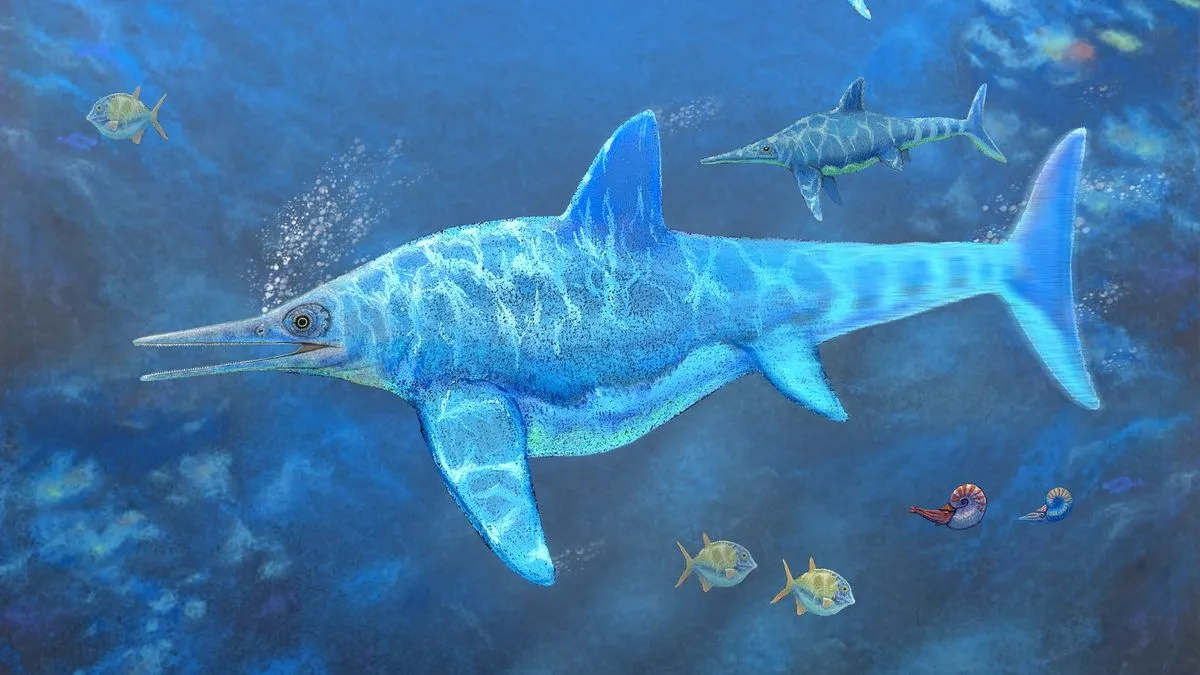
A recent CT scan of an ancient marine reptile has unveiled an astonishing revelation — the fossilized remains of a pregnant ichthyosaur contain not one, but two fetuses. This groundbreaking discovery was made by Judith Pardo-Pérez, a paleontologist at the University of Magallanes in Chile, who initially unearthed the fossil in 2009. Pardo-Pérez has indicated that further details regarding this incredible find will be shared in an upcoming research paper.
Sixteen years ago, researchers struck paleontological gold in southern Chile's Torres del Paine National Park, where they unearthed the fossilized remains of a pregnant ichthyosaur, a marine predator that resembled a dolphin and roamed the seas during the Mesozoic era, approximately 252 million to 66 million years ago. The fossil, which is remarkably preserved, initially revealed an unborn fetus measuring about 6 inches long (15 centimeters).
The ichthyosaur fossil was discovered in 2009 while Pardo-Pérez was a doctoral student. During a return visit to the site a year later, she noticed unusual bones nestled between the ribs of the main fossil, indicating the presence of a second fetus. However, it wasn't until 2022 that the complete excavation of this pregnant ichthyosaur, affectionately dubbed Fiona, was accomplished.
Following a comprehensive analysis of the fossil, Pardo-Pérez and her colleagues published their findings on February 25 in the Journal of Vertebrate Paleontology. The ichthyosaur, which is estimated to have lived approximately 131 million years ago, measured around 11.5 feet (3.5 meters) in length. The exceptional preservation of Fiona's remains is attributed to the rapid burial of her carcass in sediment, alongside a scarcity of scavengers, likely due to the low oxygen levels present on the seafloor.
Researchers have identified this specimen as Myobradypterygius hauthali, a species previously known from fragmentary remains. This discovery marks the third instance of a pregnant ichthyosaur found from the Cretaceous period (145 million to 66 million years ago), although fossils of pregnant ichthyosaurs from the Jurassic and Triassic periods have also been documented.
The analysis revealed that the vertebrae of the fetuses, measuring approximately 0.6 inches (1.5 cm) in height, are surprisingly large compared to Fiona's overall length of 11.5 feet. This suggests that M. hauthali may have given birth to relatively large young. Interestingly, while some earlier ichthyosaurs are believed to have delivered their newborns head first, the orientation of the fetuses inside Fiona indicates that, similar to many advanced ichthyosaurs, M. hauthali likely delivered its young tail first — a birthing adaptation also seen in modern dolphins and whales.
Additionally, researchers discovered Fiona's last meal, which consisted of small fish remains. This offers a rare glimpse into the dietary habits of Cretaceous ichthyosaurs, as direct evidence of their meals is quite uncommon in the fossil record.
Pardo-Pérez continues to delve deeper into the analysis of the pregnant ichthyosaur, utilizing CT scans to observe the entirety of the skeleton in greater detail. It was through this advanced imaging technique that she confirmed the presence of twins within Fiona. Excitingly, Pardo-Pérez plans to publish a new study detailing these findings in the near future, which promises to enhance our understanding of ichthyosaur reproduction and their ecological role during the Mesozoic era.